Overview
There are so many stories to tell and there’s so much history along this route - I’m walking it. Let me start by giving a brief overview of what the route was like when it was fully opened in 1849 and give you a brief history of important parts of the route. I will do two or more separate newsletters on rail routes, tunnels etc.
I found this old timetable for the route from Basel to Milano in my hotel on the Gotthard Pass. I think you can understand what “Postreise” means from the French and Italian translations. This is the route I’m walking. And now it makes sense to me that I took a boat (no longer a steamboat) from Lucerne to Flüelen (video link). The entire trip took 49 hours and 25 minutes. Love how precis our timetables were even back then.
Gotthardpost
When the roads through the Schöllenen Gorge and the Tremola on the other side of the Gotthard Pass were finished, it became possible for these horse-drawn coaches to pass. This started in 1830 and by 1835 there were three coaches a week; by 1842 it was a daily connection – even in winter when they used sleighs on the highest parts of the route; and in 1849 the entire route from Basel to Chiasso was open and connected.
Flüelen was where the Postal Voyage really started as this is where people and mail changed onto the postal coaches. Here’s a picture by the Zurich painter Rudolf Koller from 1873. You can see it displayed at the Kunsthaus Zürich (Zurich Art Museum).
They were called postal coaches because they also transported any mail that had to cross the Alps. From 1882 both mail and passengers were moved to the new railway route and the postal coaches stopped operating that summer.
Devil’s Bridge
One of the reasons the Gotthard Route was not really used before the 13th century was the passage of the Schöllenen Gorge. There was a path, but people had to walk across a mountain rather than across this narrow and dangerous gorge. There were other routes across the Alps at the time. This changed in 1230 when the first wooden bridge across the River Reuss was built – it was called Twärrenbrücke. It was replaced by a stone bridge which came to be known as Teufelsbrücke (Devil’s Bridge) in 1595. Apparently, there are many old bridges in Europe with that name – who knew?!
I also didn’t know that there were different legends on how it got its name. I’m going to share the one I was taught in school, because there is a goat instead of a dog and an old woman instead of an old man. So, the people of Uri made a pact with the Devil to help them in the difficult undertaking of building a stone bridge. In return the Devil asked to be given the first thing (he should have said “human”) that crossed the bridge. The people of Uri sent a goat across. The Swiss are cheeky that way. Legend has it that the Devil got really angry and went and got a huge rock to throw onto the bridge to destroy it. In the version I know and prefer the Devil came across an old woman who marked the rock with a cross. This made the rock way too heavy for the Devil to carry and he dropped it. You can see this rock from the train and the car. It’s by the freeway off ramp in Göschenen.
Today there is a new bridge (that’s the one I was standing underneath of) and also a railway bridge.
There’s something I should mention here that I don’t have time to elaborate on in this newsletter. There’s a huge monument next to the Devil’s Bridge to commemorate a battle. If you’d like to read about this – here’s a link.
Urnerloch
I had no idea what I was taking a picture of when I was there. Only when I reached the Gotthard Pass and went to the museum did I hear that the Urnerloch (Uri is a Swiss canton and Urner is the adjective; loch mean “hole”) was the very first Swiss road tunnel to be built in the Alps.
It was built in 1707/08 and replaced a wooden path that was hanging off the side of the mountain. The problem with that path was that it kept being swept away by flooding in the River Reuss. The tunnel was 64 m long at the time (a bit longer today), there were no lights, and it was just tall enough for pack animals to walk through without riders.
It was later extended and expanded, and a railway tunnel and foot path were added. Just a note on that railway. This is not part of the panoramic Gotthard route. It’s a different one, but equally nice – if not nicer. You take the train from Göschenen up to Andermatt (and on to Zermatt or Disentis; maybe check a map or the homepage of the Matterhorn-Gotthard Bahn). I know that this can be confusing if you’re not familiar with the local geography. Göschenen is also a stop on the Gotthard route. The last one on the north side of the Alps.
Tremola
The Tremola is the old road that leads from the Gotthard Pass down to Airolo. It’s the longest memorial to road construction in Switzerland. I took this picture right below the Gotthard Pass on the way down. It was constructed between 1827 and 1830 and today’s road was reconstructed in 1951.
In this picture you can also see the new road to the left. I saw mainly cyclists, motorcyclists, and people in convertible sports cars on the Tremola. Even if people take the route across the pass (instead of the tunnel), they tend to prefer the new road.
My plan B when walking down was to just walk along the road if the hiking route got too steep. It basically just cut straight down, and I crossed the road several times. This was very impressive to see on foot and I can just imagine how that postal coach made its way up and down these hairpin bends.
More to come – stay tuned
As I said above, I will talk more about the Gotthard Railway – both the old route and the new one. This newsletter covered the yellowish routes. I’m not as interested in the roads. You all know I prefer trains. It’s part of the region’s history either way. One thing I’d like to note here is that when the road tunnel was opened in 1980 the Gotthard Pass was no longer open to traffic in winter. This is still the case today. I can highly recommend the museum on top of the Gotthard Pass. It explains the entire history – including all the tunnels. The Gotthard Massif is full of holes, just like Emmental cheese. I’m not even kidding.
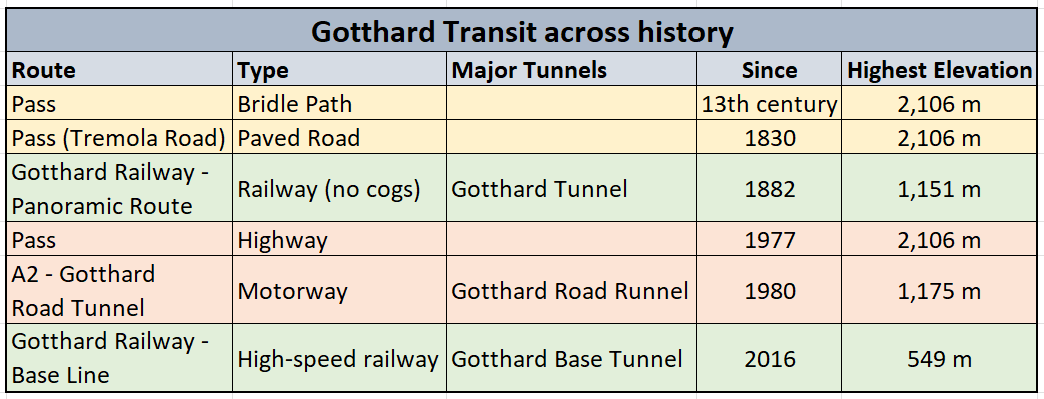
I won’t apologize for using Wikipedia as much as I did. It’s good to give an overview and I mainly needed it to check if I remember the stories and dates correctly. Also, most other sources where in German and/or Italian which I don’t have a problem with personally, but some of my readers might.
Notes:
Reisepost
https://www.alpenvereinaktiv.com/de/punkt/val-tremola-gotthard-reisepost-1830-1882/40747181/ (German only)
Gotthardpost picture
https://upload.wikimedia.org/wikipedia/commons/1/12/Koller_Gotthardpost_1873.jpg
Gotthard Pass
https://en.wikipedia.org/wiki/Gotthard_Pass
Schöllenen Gorge
https://en.wikipedia.org/wiki/Sch%C3%B6llenen_Gorge#History
Urnerloch
https://de.wikipedia.org/wiki/Urnerloch
Matterhorn Gotthard Bahn
https://www.matterhorngotthardbahn.ch/en/
Swiss tunnel history is fascinating (if you speak German, French or Italian)
https://hls-dhs-dss.ch/de/articles/007962/2014-01-07/
Tremola
https://patriziato.airolo.ch/il-san-gottardo/la-vecchia-tremola/ (Italian only)
https://www.ticino.ch/en/commons/details/The-Tremola-Road/137877.html (English)
Battle at the Devil’s Bridge
https://en.wikipedia.org/wiki/Suvorov%27s_Swiss_campaign




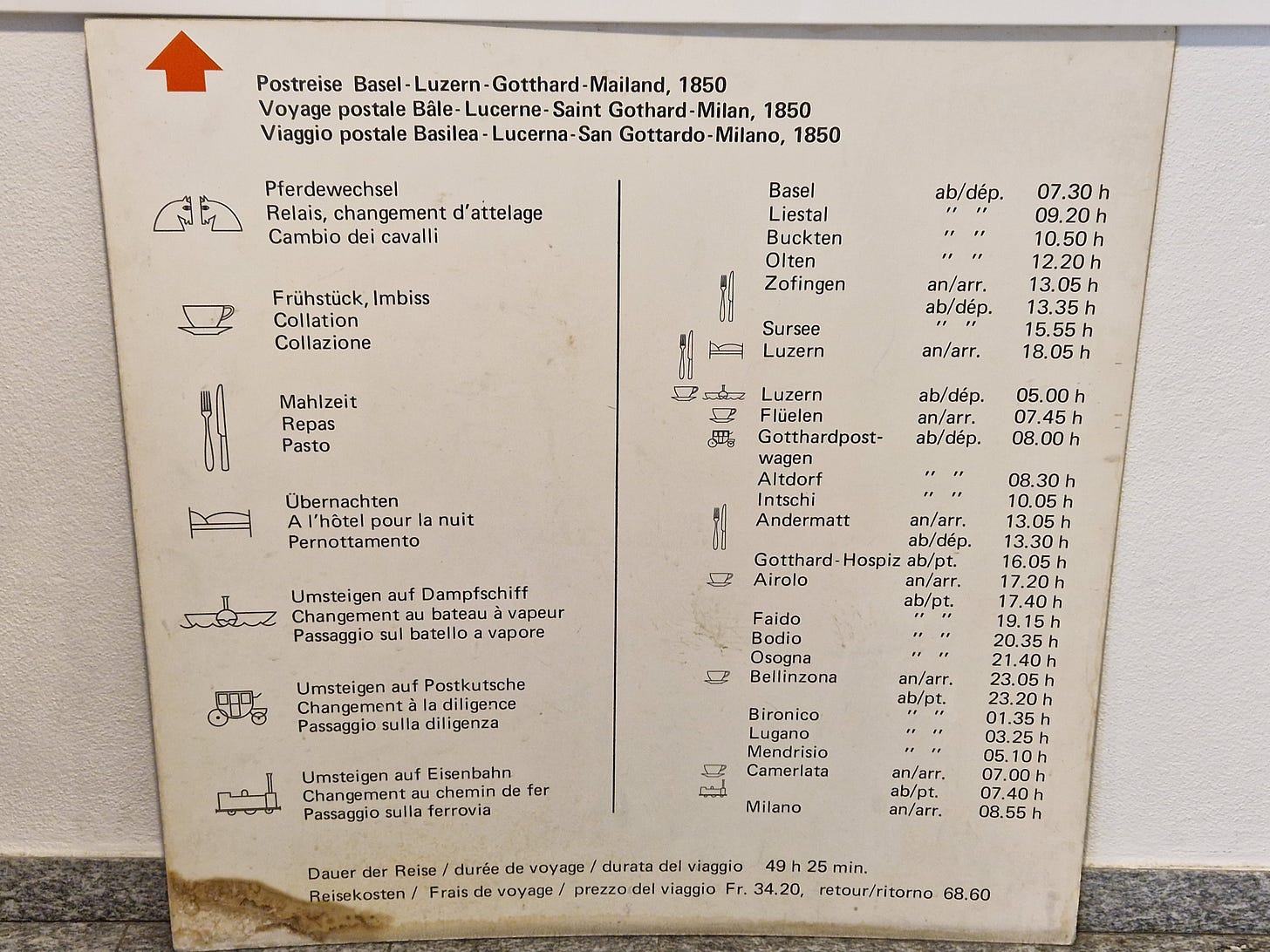
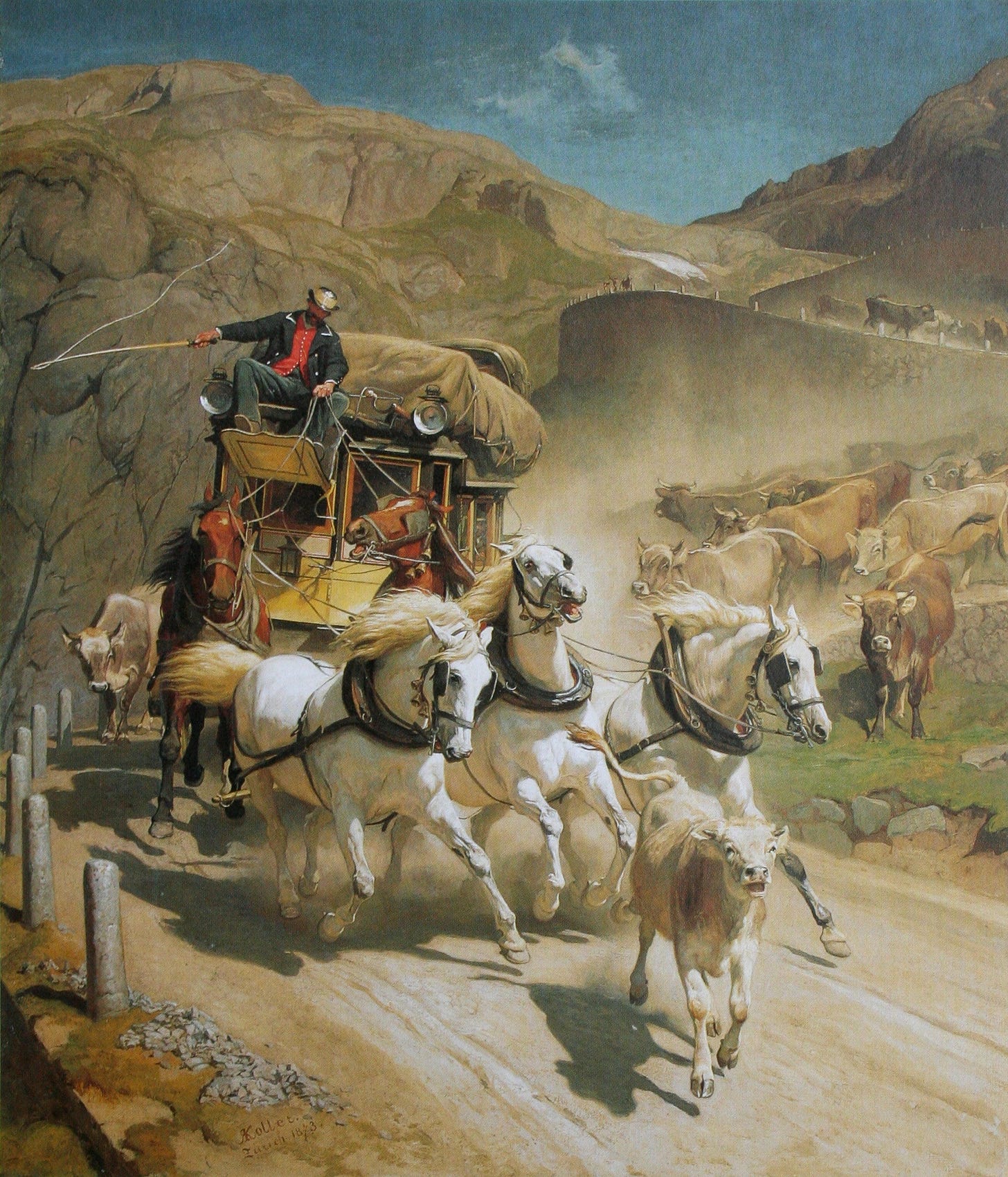
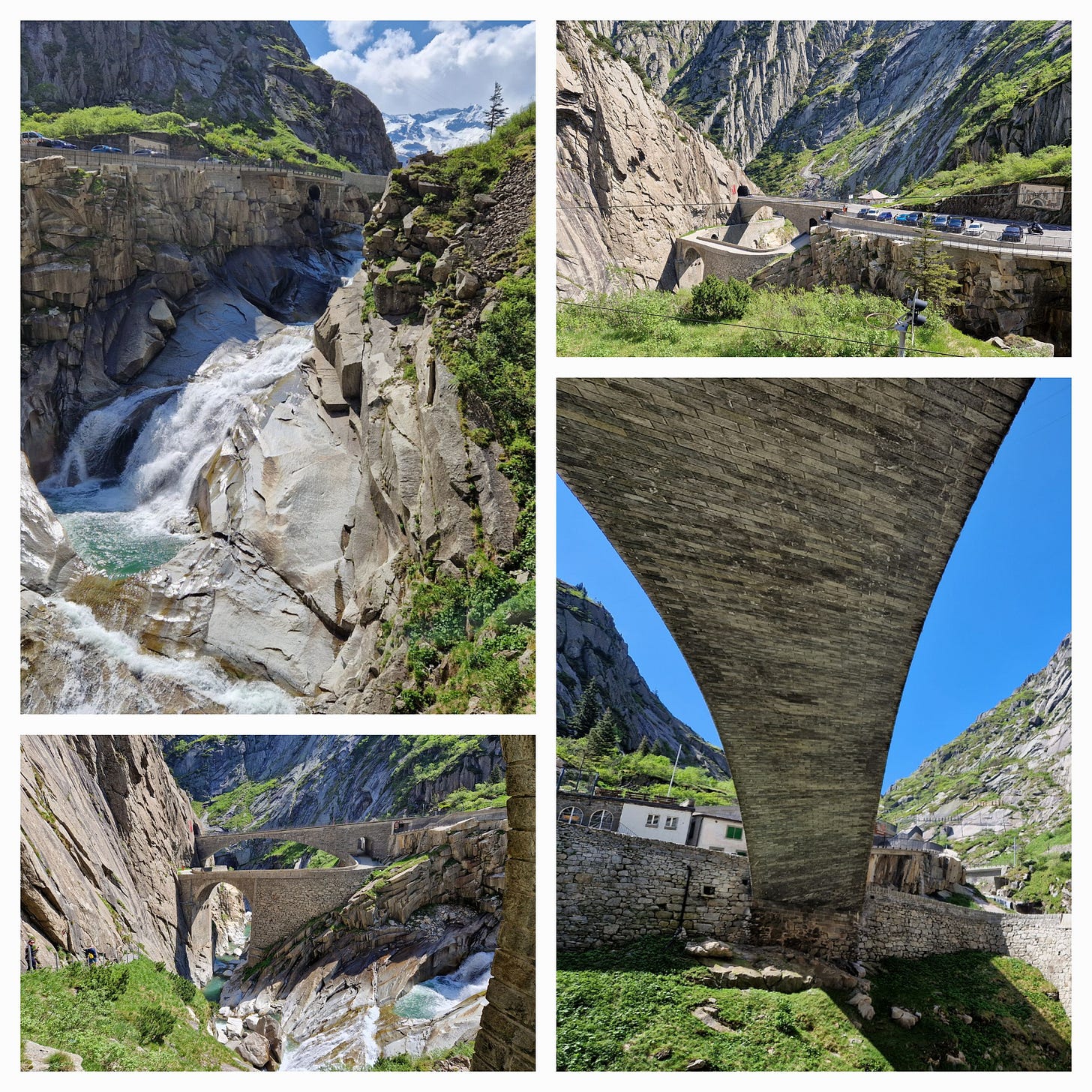
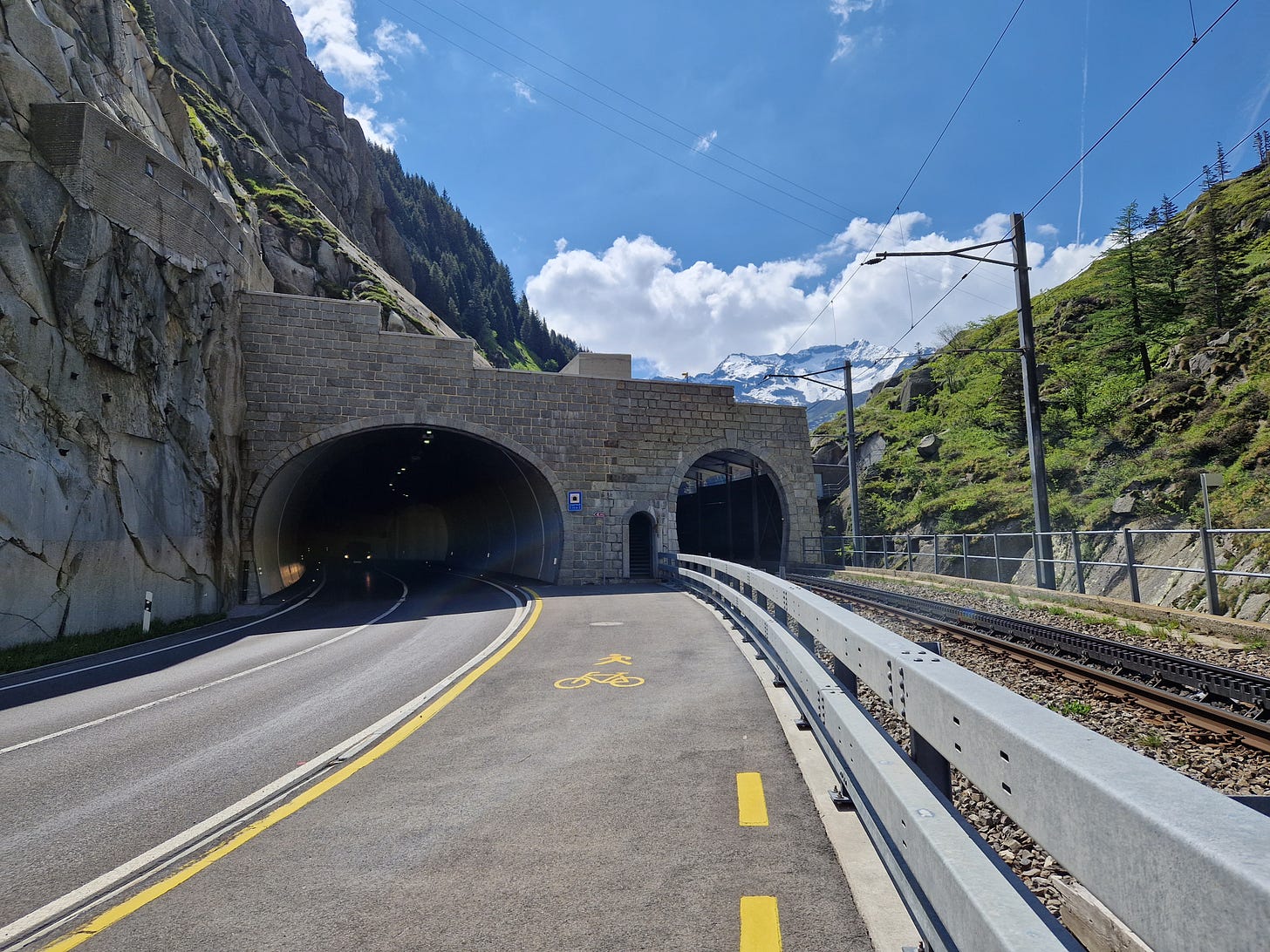
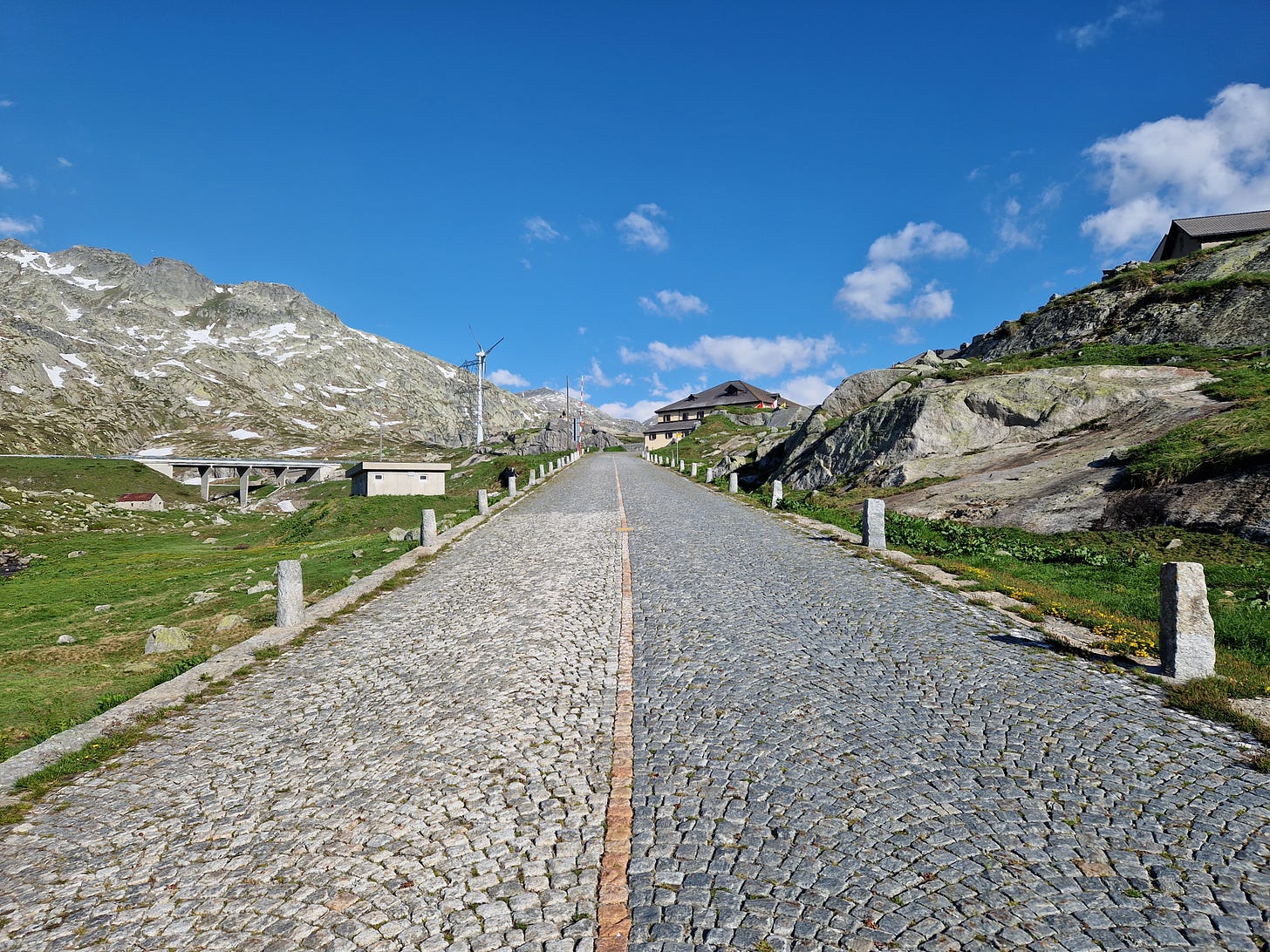
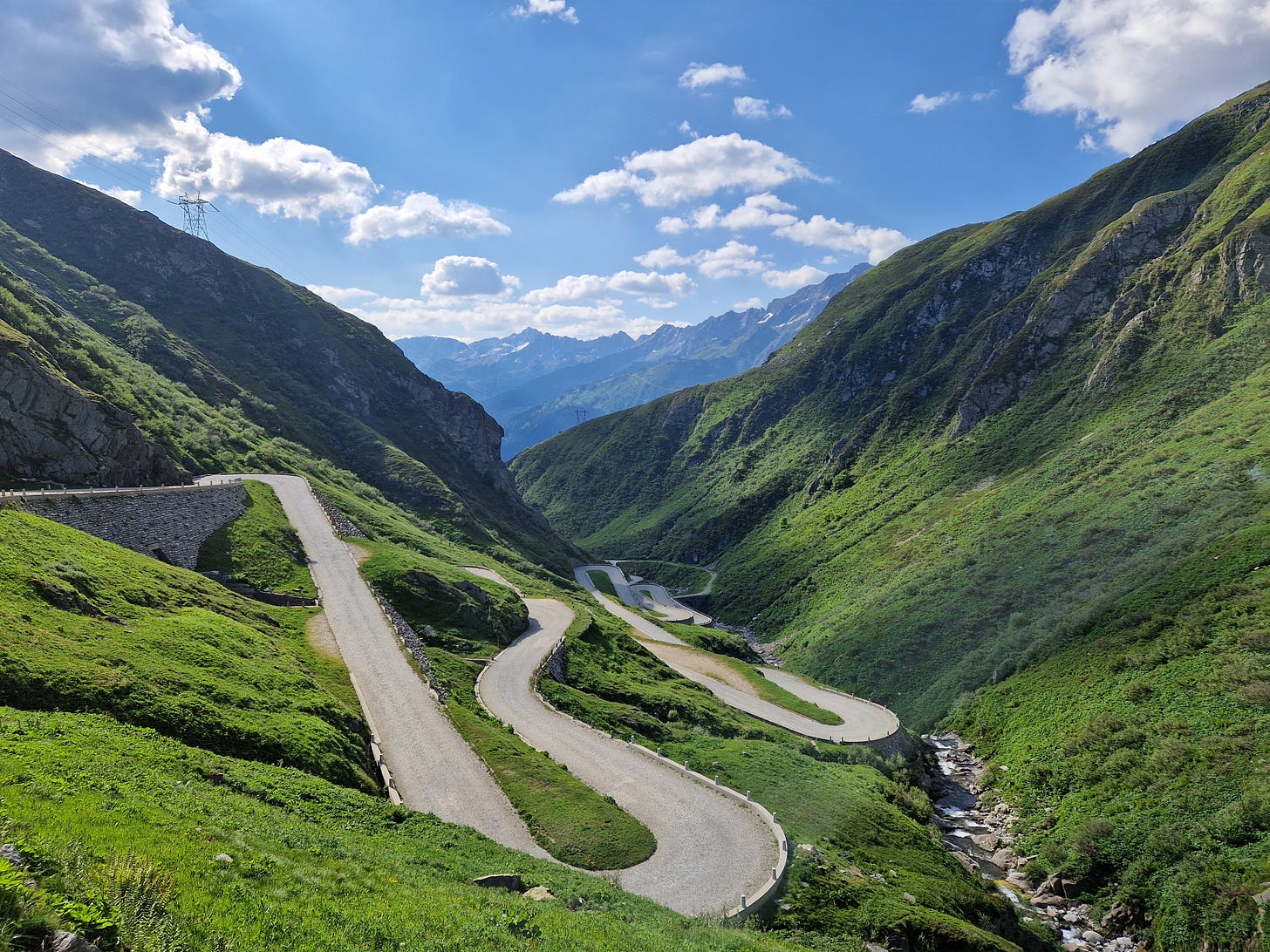
Great newsletter Evelyne! I not only love what you write, I love following up and digging around to learn more. Thank you SO much for sharing parts of your world!
Such a lovely travel post. You’re luring me back to Switzerland with every newsletter, video, note. A country so rich in lakes, mountains, gorges, green spaces. Whether by walking, train or boat, it is all so very inviting. My week there was much too short; vacations in the USA for hard working women in the 80s did not allow for time away from a career involving healthcare. Must say I looked forward to this trip more than any other and left NYC on my 32nd. birthday;
09/09/1982. It was delightful, picturesque, so many flowers, like nothing I’d ever seen. Saw a documentary about Audrey Hepburn last evening; seems she was drawn to the area as well and made it her home in later years. Lucky lady! Did you ever hear of the similar postal situation in America? The Pony Express Stagecoaches for mail and passengers; in the west. Seems there are some similarities! 😊🕊️